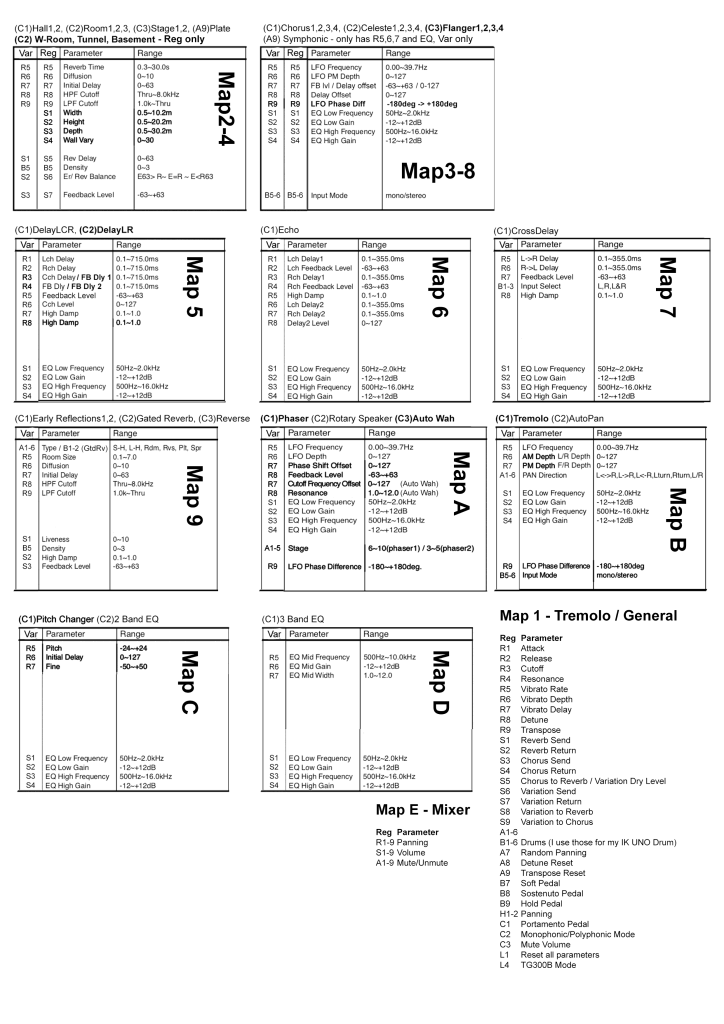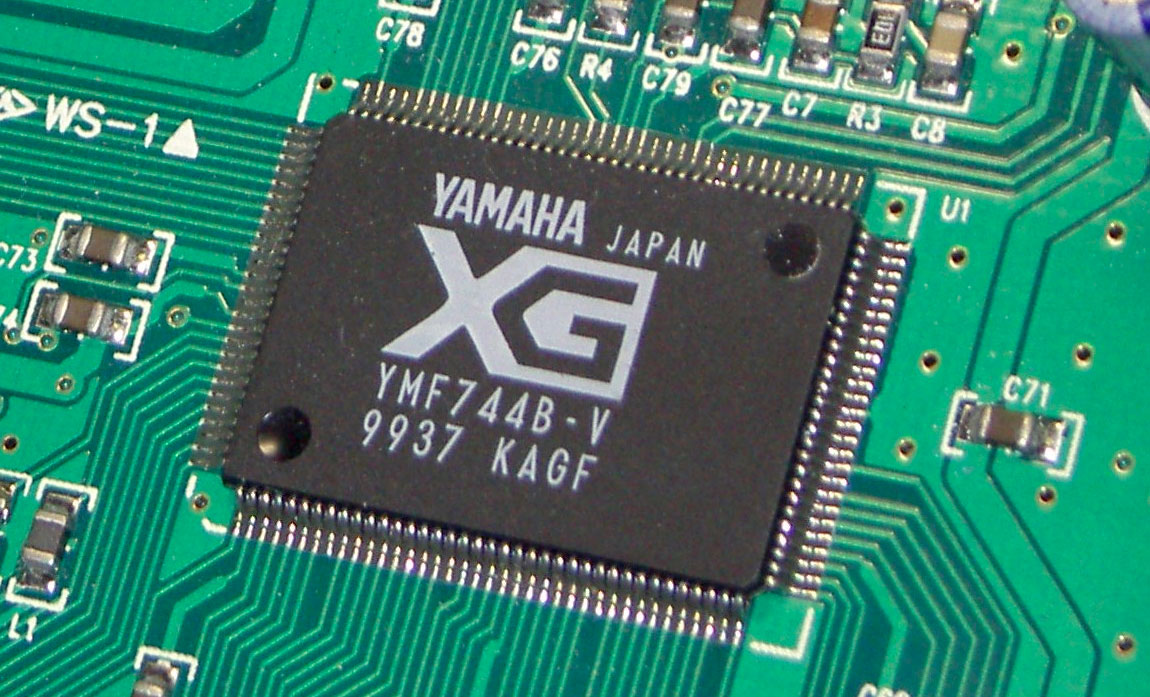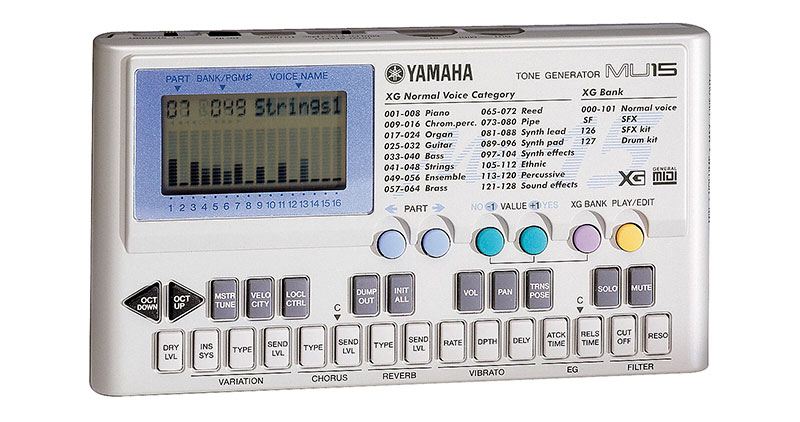I honestly think that Yamaha XG is one of the most underrated MIDI systems ever made.
It got the bad stigma of being just a “better General MIDI” box (isn’t that the case with Roland GS as well?) without people realizing how flexible and powerful this system is.
And not just for playing back MIDI files you find on the internet, but for composing new, modern music as well.
There have been quite a few XG modules produced, some more limited, other way more powerful, but today we’re going to focus on one of the humblest, which I also happen to own: the Yamaha MU15.
This module has one of the biggest upsides of all modules available, though: it is portable.
It can be battery powered with 4xAA and has its own small keyboard which is, to the surprise of absolutely no one, not touch sensitive. And not a great keyboard to play on unless you have thin fingers (which I personally have but I still find it difficult to use).
Looking at the module you’d immediately disregard it as a toy, and I wouldn’t blame you for it.
If you go by the available controls on the unit itself, you’d find yourself with a very, very limited unit.
The manual, though, (which is among one of the absolutely best manuals I’ve ever come across in my life) will surprise you with almost 40 pages of extra functionalities which are hidden within this little beast.
How do you unlock the full potential of the MU15, then you may ask.
In the most painful way known to every musician who has been making music during the 90s: SysEx commands.
This is why I’ve spent more than 2 weeks making custom maps for my Roland/Edirol PCR300 MIDI keyboard: it’s one of the very few keyboards who can be completely programmed to send even SysEx data with its knobs and sliders.
With those maps and any XG module, you’ll be able to access almost all of the functions of the XG system.
And, boy, are there a lot of them.
I won’t be listing all of them here otherwise this would end up being a 20 page essay (go look in the manual below if you’re interested), so I’ll just make a short list of things I really like about the XG system:
- Excellent base sounds (for a ROMpler of the late 90s)
- 3 “hidden” modes to unlock even more sounds: XG, General MIDI and TG300B mode (big thank you to Nikita_lita on the MiSTer Discord for letting me know of the GS Reset command to enter the TG300B mode. Apparently this is only documented on the manual of the Yamaha DB50XG module and nowhere else)
- Several controls over the sounds, mainly: Attack, Decay*, Release, Cutoff, Resonance, LFO (with controls for rate, depth and delay) and Detune
- Literally tons of effects, you can stack 3 together although 2 are fixed: Reverb and Chorus. You can choose the third one from more than 20 different effects with a myriad of customizable parameters
- You can route the effects any way you like: you can have them in series or in parallel or, for example, route the Chorus to the Reverb or the third effect to Reverb, Chorus or both
- Plays great with external effect pedals
…and I could go on for days, but unless you’re looking for an analog synth, this is really a criminally underrated gem.
* I really didn’t care for the Decay so I’ve omitted it from the maps since I’ll always be playing with the keyboard. Feel free to add it back, just check the manual to know which SysEx string to use.
Anyway, enough talking. In this page you’ll find a zip file which has all the custom maps to access (almost) all of the functions of the XG system.
To use them, you’ll need a Roland/Edirol keyboard from the PCR range, ideally the PCR-300, 500 or 800 as those have the most knobs and sliders.
If you have another keyboard which is able to send SysEx commands, then you can still use the Roland PCR Editor software (which is free and you can download here for both macOS and Windows) to load the maps and then copy-paste the SysEx commands over to whatever software your keyboard uses.
Here’s an A4 page I’ve made which tells you which maps does what and how all the various commands are mapped. You can print it to have it handy while you tweak knobs:

I’ll also put here the manual for the MU15: Download
The juicy things start at page 75.
Finally, a closing note: are those maps comprehensive? Will they control every little bit of the XG system?
Absolutely not.
There are simply not enough knobs, buttons and sliders (at least on my keyboard) to have everything under control.
A couple examples are how fast Portamento works, how quick the Pitch Bend goes to the desired note and a bunch other things.
There are just too many.
I also omitted the distortion and amp sim effects because those are, IMHO, absolutely garbage.
Anyway, I hope you’ll find this useful and, if you have an XG module somewhere, it will make you want to drag it out and give it one more go.
Those are stunning music making machines and I hope that one day they’ll get the love they deserve.
Maybe even a Bad Gear episode.



